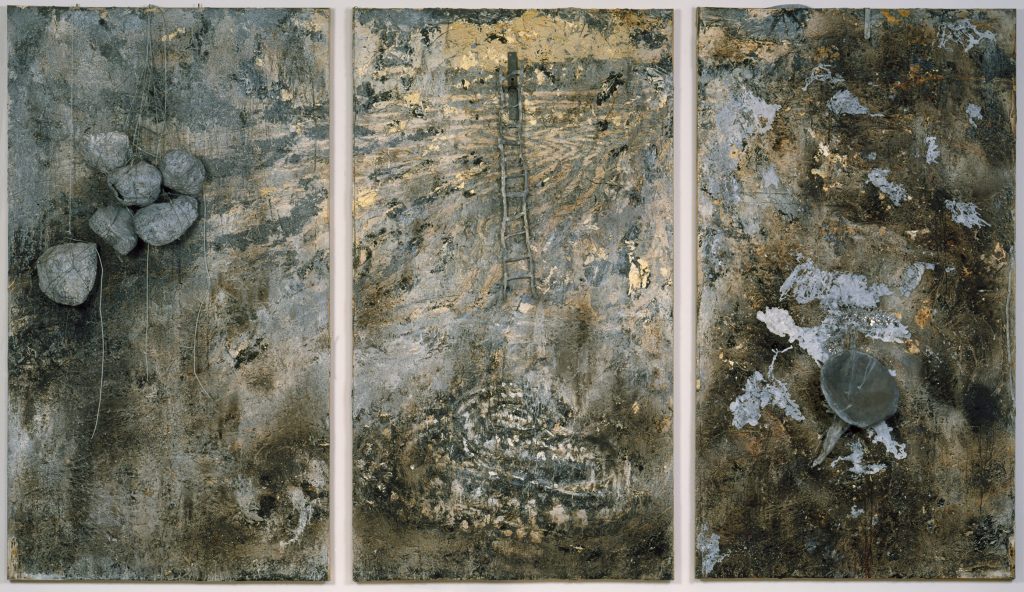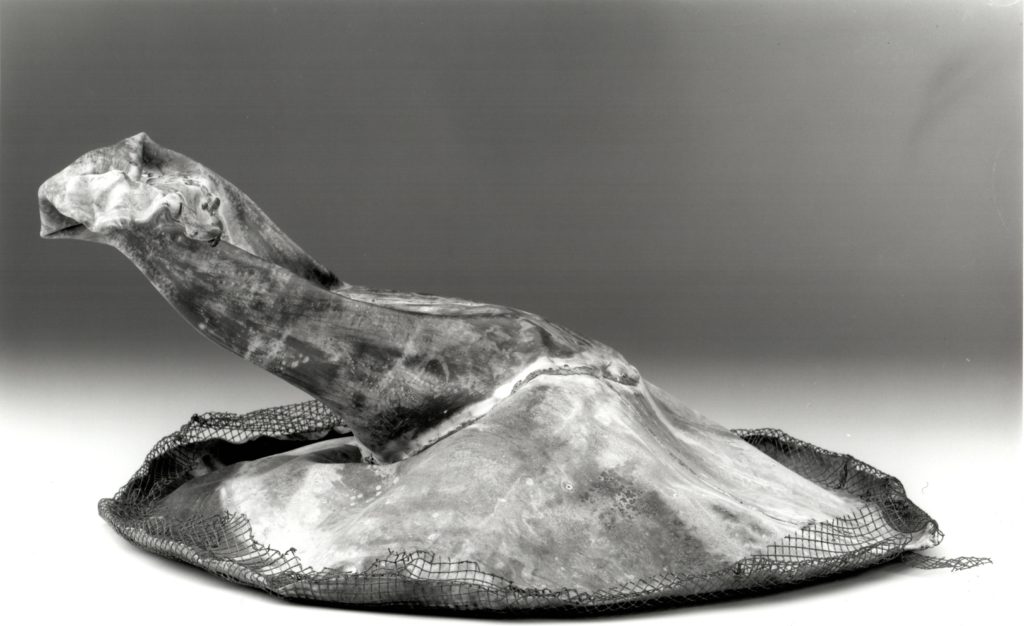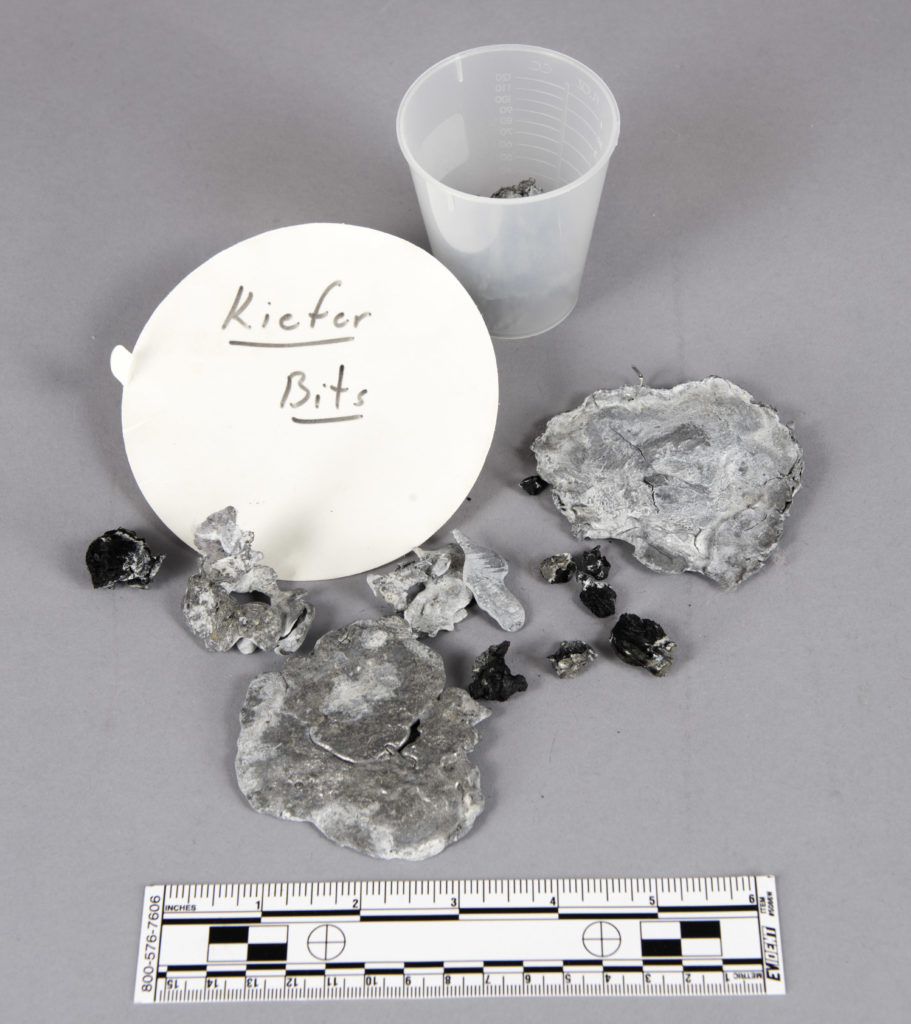Untitled (work of art)
Artwork Info
Key Ideas
- The texture of this painting was created with layers of paint, lead, straw, and charcoal. The artist painted over a photograph of rural Germany and added three-dimensional objects to the surface of the painting. These include a ladder, a serpent, and a funnel-shaped object.
- Anselm Kiefer grew up in Germany after World War II. The war-torn landscapes and political struggles of his childhood greatly influenced his work and artistic process.
- Kiefer’s work is inspired by the concepts of transformation, destruction, and creation.
- When this painting is moved at the NCMA, sometimes small pieces flake or fall off of it. The artist has requested that the small pieces do not get reattached because he likes seeing the way his paintings transform over time.
Learn More
Anselm Kiefer’s Untitled (1986) is a large, three-dimensional painting with a strong sense of mystery and symbolism. A cluster of rocks is attached to the left panel, and a metal, funnel-shaped object is attached to the right panel. The middle panel features a snake or serpent under a ladder made of lead. Some art historians believe the ladder represents a link between the real world and the spiritual world, while others see the serpent as a symbol of evil.
The artist says he is inspired by ideas of transformation, destruction, and creation. He created Untitled by layering paint, lead, and other materials on top of a photograph of a rural German landscape.
What I like to do is transform things. I don’t know, from the beginning, what it will say. It has to be in a conversation with me.
Anselm Kiefer
Kiefer grew up in Germany in the aftermath of World War II. He spent his childhood surrounded by destroyed landscapes and major political changes. His life experience has influenced his work and his artistic process. His process includes constantly destroying and recreating pieces of his paintings.
When this painting has been moved at the NCMA, pieces of paint, rock, and lead have fallen off of it. Kiefer says he appreciates seeing his paintings transform over time and has requested that small pieces are not reattached. NCMA conservators have a simple rule that if something “smaller than the size of a hand” falls off Kiefer’s painting, they won’t reattach it. They have collected and saved several “Kiefer bits,” or small pieces that have fallen off the painting. When the funnel (which is larger than the size of a hand) detached from the right panel, however, the NCMA conservation team repaired and reattached it.
tags: abstract expressionism, texture, World War II, history
Additional Resources
Resources for Teachers:
- Explore a lesson plan about writing about art.
- Watch a documentary about Anselm Kiefer.
- Read an interview with the artist.
Resources for Students:
- Watch a video of Anselm Kiefer at work.
- Explore more works by Kiefer.
- Read an article to learn how Germany was divided after World War II.



